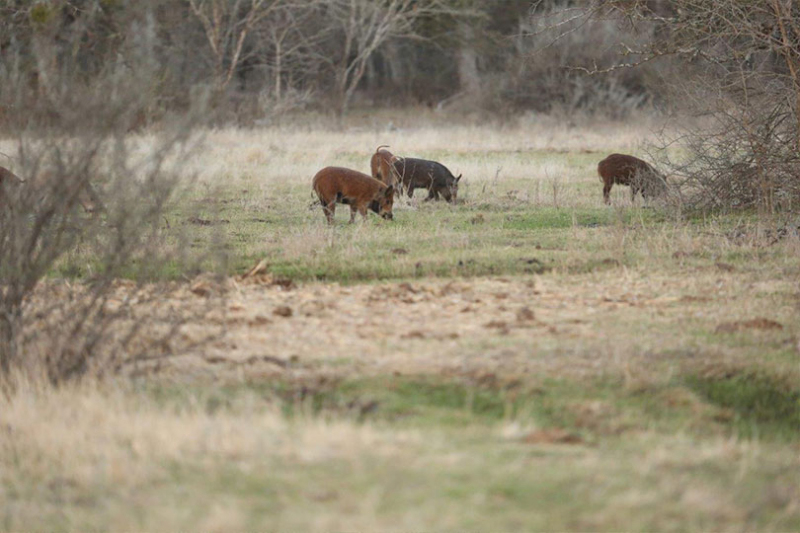By Julie Tomascik
Editor
Is it possible to stop the swine of mass destruction in Texas?
A new study conducted by Texas A&M AgriLife Extension Service shows new tools can help slow them down.
A warfarin-based toxicant, according to researchers, can be an effective option for landowners in controlling feral hog numbers and damage to their property.
The two-year study took place on 23 sites in 10 counties across various regions of the state. During the trials, researchers were able to reduce feral hog numbers effectively and efficiently with diligent application of the product.
Research efforts were led by Dr. John Tomeček, AgriLife Extension wildlife specialist, and Michael Bodenchuk, director of Texas Wildlife Services.
“Texas A&M AgriLife Extension Service was tasked with evaluating the product’s ability to reduce feral hog numbers and damage in regions across the state and seasons of the year,” Tomeček said. “We found that it can be highly effective when utilized correctly and saw no access to the toxicant by non-target species when all feeder devices functioned properly.”
AgriLife Extension is the first to test the warfarin-based toxicant in a real-world application.
“Unabated feral hog populations threaten our natural resources, our livelihoods and our quality of life, and our goal, as a land-grant institution, is to provide safe, effective, science-backed solutions for all Texans,” John Sharp, chancellor of The Texas A&M University System, said.
Toxicant as a tool
Researchers conducted field evaluations of a low-dose warfarin-based toxicant to determine its efficacy across different regions of the state and to evaluate the product’s ability to help landowners prevent property damage and economic harm from feral hogs.
Over the two years, AgriLife Extension specialists worked with private landowners on recommended application methodologies to provide real-world testing conditions for the product and the suggested best practices.
Feral hogs were conditioned to the feeders and bait before the warfarin-based toxicant was added. The specially designed dispensers prevent access by non-target species, Tomeček said.
Once the product was applied to the bait, feral hogs in the field trials consumed lethal doses within five days of consistent access to the bait.
Tomeček noted the product is not considered acutely toxic to non-target animals if they do gain limited access to the bait. It’s also not found at lethal levels within the tissue of deceased feral hogs.
The key, Tomeček said, is to “correctly and consistently” use the warfarin-based toxicant.
The next phase in the study was to have landowners apply and manage the bait themselves after a trial period of supervision and instruction.
Landowners who followed the suggested maintenance schedule, checked the feeder routinely for mechanical issues and replaced the bait consistently reported sharp declines in feral hog numbers. Their damage levels over the seasons throughout the year were also down significantly.
Landowners who did not follow the recommended protocols were less successful in curbing feral hog numbers on their property.
AgriLife Extension reported these results were true, “regardless of the season of the year or the region of the state where the trial was being conducted.”
Feral hog populations
The feral hog population is expanding at an alarming rate in the Lone Star State, leaving farmers and ranchers facing thousands of dollars in damages each year.
The most recent reports estimate over 3 million feral hogs cause more than $500 million annually in damage to agriculture and private property throughout the state.
But the destructive species also degrades water quality and introduces E. coli, making the water unsafe to drink. Feral hogs also pose a threat to livestock and wildlife, preying on small animals.
The destructive species is now considered a national threat due to the liability they create for Texas waterways and native ecosystems.


Leave A Comment